Last-Minute NYC Holiday Gift Guide 🎁
We’ve created a holiday gift guide with presents for the intrepid New Yorker that should arrive just in time—


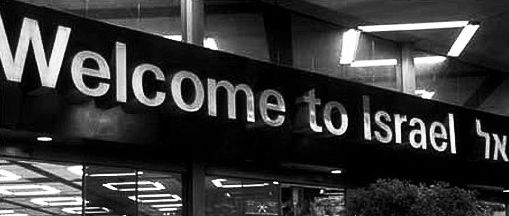
Fourteen years have passed since I was last in Israel and my memories of the country’s architecture are fleeting at best. I remember that Jerusalem glows golden in the sun, the light reflecting off each and every building, all clad harmoniously in Jerusalem stone. I remember, also, that Tel Aviv shimmers with the whiteness of its buildings. Yet, I also remember the banality of much residential and commercial architecture, the cheap materials and shoddy construction. As the plane begins its descent, I am reminded also of the squat, concrete box that used to be Terminal 1 at Tel Aviv’s Ben Gurion Airport. The airport welcomed passengers with giant white letters on the facade, before ushering them into a windowless and overcrowded bunker, lit with glaring halogens, as they waited for their passports to be checked.
In the intervening years, much has changed in Israel, politically, socially, economically, and architecturally. I have returned to travel the country and assess its aesthetic landscape. I want to understand how the dynamics of a complex and changing society have shaped the nation’s built environment and what is the current state of play for Israeli architecture.
My first impressions, as soon as I step off the plane, confirm my suspicions of change. The majority of passengers now arrive into Terminal 3, a 2004 construction conceived by Israeli-Canadian architect Moshe Safdie, together with the Americans Skidmore, Owings & Merrill and Israelis Ram Karmi and Lissar Eldar. The new building is generously proportioned, with large volumes and plenty of daylight. The central hall, known as the rotunda, consists of a Pantheon-like central oculus, through which rainwater is channelled to create a dramatic falling water sculpture. The boldness of the terminal is symptomatic of a newfound confidence in Israeli architecture, which, after all, has a strong tradition to build on, if we think of Tel Aviv’s Bauhaus masterpieces.
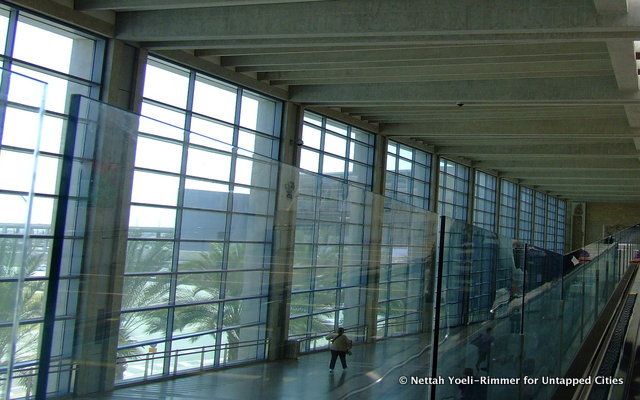
The new Ben Gurion terminal is sleek, modern and technological. As an international gateway to Israel, it seeks to proclaim the country’s role on the world stage as a modern member of the club of nations. Yet, for all its showmanship and elegance, the new building has a much stronger sense of place than most national airports. Added to the customary glass and stainless steel – essential accoutrements of twenty-first century cosmopolitanism – is something local, biblical even: copious servings of Jerusalem stone. The airside to landside connector, by Moshe Safdie, brilliant in its theatrical play between two levels, is resolutely monumental and solid, rare characteristics in modern airports, which often strive for ephemerality and placelessness. Safdie’s building is so entrenched and resolute, it is almost reminiscent of the imperial place-making of ancient civilisations and betrays and underlying insecurity about belonging.
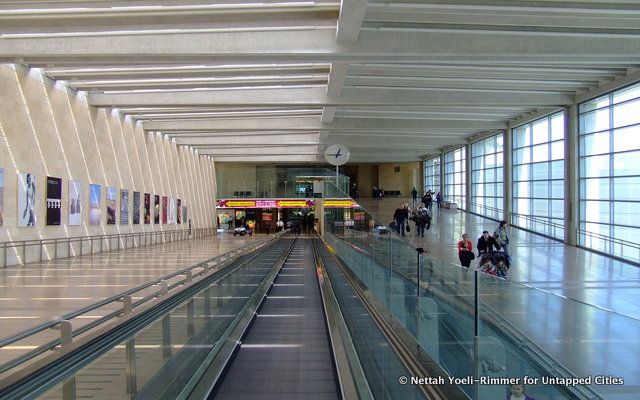
This tendency to evoke history, to anchor buildings through a strong monumentality was a feature that emerged again and again in my observations of Israeli architecture. Perhaps this should not be surprising, in a nation so singularly devoted to history and myth. This historicism takes two distinct forms. The first, notable in the work of Moshe Safdie, is a hyperbolic Biblical monumentalism, an attempt to express the grandeur of the past with modern materials and techniques. The second, often employed, to greater or lesser effect, by Ram Karmi, winner of the 2002 Israel Prize, is a neo-Brutalism, where the sheer bulk of the building creates a monumentality of presence. His recently completed extension of the Habima (National Theatre) in Tel Aviv has sharply divided critics.
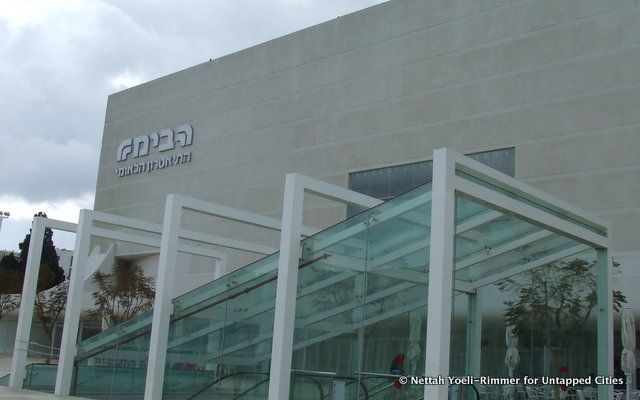
Both movements suggest an overriding preoccupation with identity and solidity, a need to concretely express the nebulous concepts of history, nation and territory, an attempt to lay foundations as a substitute for roots.
Undoubtedly, this insecurity is a product of Israel’s unusual circumstances, its youth and its attempt to establish a territorial nationalism for a people previously united by more portable, spiritual concepts. Often tabula rasa planning policies have pretended otherwise, but Israeli architecture, for all its internationalism, was not implanted onto virgin land. The desert that was made to bloom, has in fact been cultivated since time immemorial. There is a wealth of architectural legacy that testifies to previous occupants of the land; Palestinians, Ottoman rulers and even the Crusaders. They all left a significant mark on the ground and their architectural forms have further infused the liberal admixture of Israeli architecture.
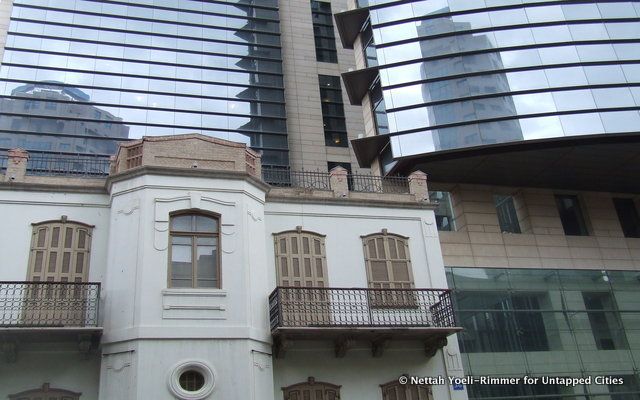
As I explored Israel’s cities, its multiple identities and deep attachment to history and myth resounded in the built environment. Everywhere I was struck by the contradictory blend of cosmopolitanism and navel-gazing provincialism, an architecture torn between universal modernity and historical exceptionalism. Beginning with the bustling metropolis of Tel Aviv, this series of articles will examine the country’s rich architectural tapestry and attempt to understand the multifaceted threads with which it is woven.
The black and white photograph is courtesy of Guadalupe Casas
Check back for the next article in this series: Tel Aviv
Follow Untapped Cities on Twitter and Facebook! Get in touch with the author @nettahyr.
Subscribe to our newsletter